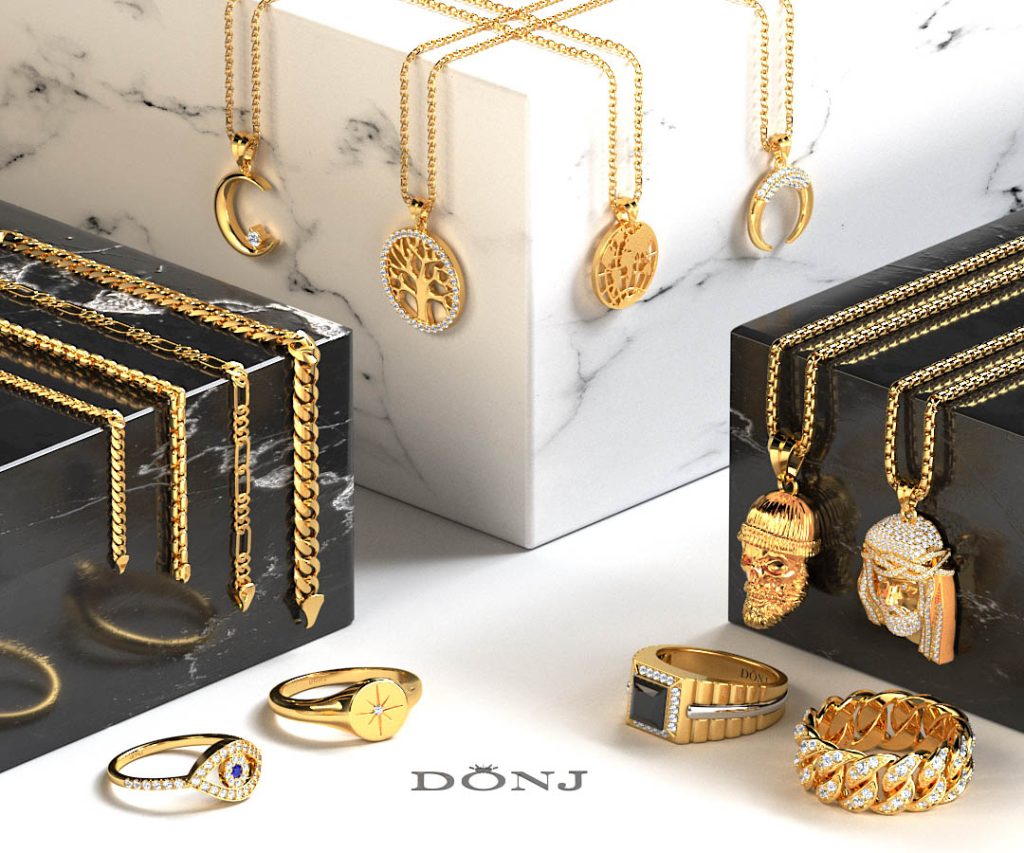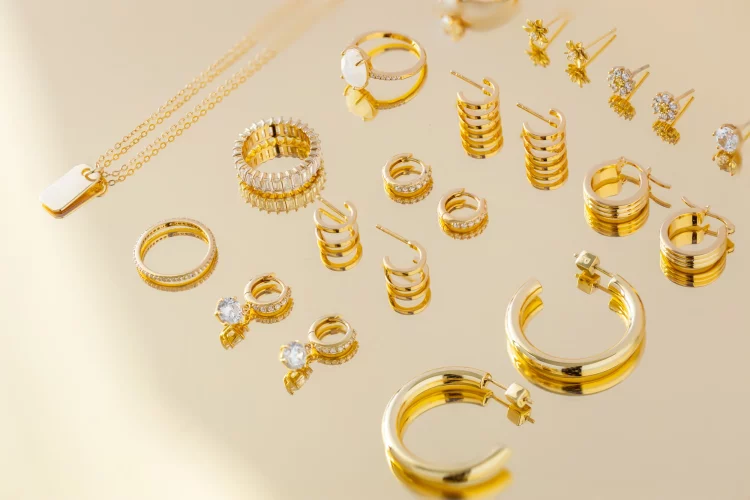Gold jewelry has long been valued not only for its beauty but also for its potential as an investment asset. Over the years, the price of gold has shown resilience against inflation, economic downturns, and geopolitical instability, making it a sought-after asset for investors looking to hedge against market risks. In this article, we will explore the investment potential of gold jewelry, drawing on expert opinions about future demand, how luxury and sustainability trends influence pricing, and how gold jewelry can serve as a store of value. Additionally, we will provide expert tips on selecting gold jewelry pieces with high investment potential.
Experts’ Views on the Future Demand for Gold Jewelry as an Investment Asset
Gold jewelry has evolved from a mere fashion accessory to a serious investment vehicle. As global economic uncertainty increases, the demand for gold jewelry is expected to rise as more people look for ways to preserve wealth. Experts agree that the growing interest in gold jewelry as an investment asset is tied to several factors, including the metal’s lasting value, its aesthetic appeal, and its ability to retain purchasing power over time.
1. Gold Jewelry as a Hedge Against Inflation
One of the key factors driving the demand for gold jewelry is its ability to act as a hedge against inflation. As inflation erodes the purchasing power of fiat currencies, investors often turn to gold as a stable store of value. Unlike paper currencies, the supply of gold is limited, and its intrinsic value has been recognized for thousands of years. Jewelry, especially high-quality gold pieces, provides an attractive way for investors to store wealth in a tangible form that can be easily worn and enjoyed.
The growing trend of inflationary pressures across the globe, exacerbated by supply chain disruptions, energy crises, and the effects of the COVID-19 pandemic, has led many to seek alternatives to traditional financial assets. Experts predict that as these pressures continue, more people will turn to gold jewelry as a secure way to preserve wealth, further driving up demand.
2. Shifting Consumer Preferences and Wealth Concentration
Another important factor influencing the future demand for gold jewelry is the concentration of wealth among high-net-worth individuals (HNWIs) and the growing interest in luxury assets. As wealth becomes more concentrated, there is an increasing demand for luxury items, including gold jewelry, not only as status symbols but also as investment vehicles. Wealthy individuals often view gold jewelry as a form of portable wealth, one that can be passed down through generations or sold if necessary.
In addition, emerging markets in Asia, the Middle East, and Africa are contributing to a growing demand for gold jewelry. Rising middle-class populations and an increasing number of affluent consumers in these regions are expected to continue driving the global demand for gold jewelry. Experts predict that this will play a significant role in boosting gold jewelry prices in the coming years.
How Trends in Luxury and Sustainability Will Shape Gold Jewelry Prices
As the world becomes increasingly concerned with sustainability and environmental impact, these trends are beginning to shape the gold jewelry market. While luxury remains a driving force behind gold jewelry demand, it is now intertwined with a growing demand for ethically sourced and sustainable products.
1. Luxury with a Conscience
Today’s consumers are increasingly concerned with the environmental and social impact of their purchases. The gold jewelry industry has seen a significant shift toward sustainability, with many brands adopting ethical sourcing practices and transparency in their supply chains. Consumers, particularly millennials and Gen Z, are now more likely to invest in products that align with their values, including those that promote fair labor practices and environmental responsibility.
In response to this demand, a growing number of jewelry brands are turning to recycled gold and eco-friendly practices in their production processes. These sustainable practices not only reduce the environmental impact of gold mining but also appeal to investors who want to make responsible choices while still enjoying the benefits of investing in precious metals.
2. The Premium of Ethical Gold
Gold jewelry that is ethically sourced or made from recycled gold often carries a premium price, as consumers are willing to pay more for products that meet their ethical standards. Experts predict that this trend will continue, with ethical and sustainable gold jewelry becoming increasingly valuable. As more jewelry companies and consumers demand ethical sourcing and environmentally friendly practices, the market for sustainable gold jewelry will grow, and its prices will rise accordingly.
Brands like Chopard and Tiffany & Co. have already adopted sustainable practices, offering jewelry made from responsibly sourced gold. These initiatives are expected to influence both consumer demand and the pricing of gold jewelry, particularly for investors who value both luxury and sustainability.
The Potential for Gold Jewelry as a Store of Value Over Time
Gold jewelry is not only an investment in the present but also a potential store of value that can appreciate over time. As with other forms of gold, jewelry has the ability to retain value through market fluctuations, making it a reliable asset for those looking to protect their wealth.
1. Intrinsic Value and Craftsmanship
Unlike gold coins or bullion, which are valued purely based on weight and purity, gold jewelry is also valued for its craftsmanship and design. Expert jewelers and artisans often create intricate pieces that carry additional value beyond the gold content. This can include vintage or designer pieces that are sought after by collectors. Over time, the value of these pieces can increase as their rarity and craftsmanship are recognized.
For example, certain vintage or antique gold jewelry pieces have significantly outperformed gold bullion in terms of price appreciation, with collectors paying premium prices for rare or historically significant items. Investing in high-quality, limited-edition, or designer gold jewelry can offer additional investment potential by combining the value of the gold itself with the desirability of the design.

2. The Role of Sentimental Value
One of the unique aspects of gold jewelry is its sentimental value. Unlike gold bars or coins, which may be traded solely based on price, gold jewelry often carries personal or emotional value for its owner. This aspect of gold jewelry can enhance its worth, particularly in cultures where jewelry is passed down through generations. This combination of emotional and financial value makes gold jewelry an attractive investment option, as it can serve as both a store of value and a family heirloom.
3. Gold Jewelry as a Long-Term Investment
Gold jewelry, especially high-end and designer pieces, tends to appreciate over time. Experts advise that investors looking to purchase gold jewelry as an investment should focus on items that have lasting appeal, such as pieces made by renowned designers or those that feature unique craftsmanship. By investing in pieces that combine high-quality gold with exceptional design, investors can expect to see value appreciation as demand for rare and unique items grows.
Expert Tips on Selecting Gold Jewelry Pieces with High Investment Potential
When it comes to investing in gold jewelry, not all pieces are created equal. Some pieces will retain or increase in value over time, while others may not. Experts offer several tips for selecting gold jewelry that has strong investment potential.
1. Focus on Classic and Timeless Designs
Investing in classic and timeless designs is one of the best ways to ensure that your gold jewelry appreciates in value. Pieces such as simple gold chains, bracelets, and rings with clean lines and minimalistic designs tend to retain their value because they remain in style for long periods. Avoid investing in overly trendy or fashion-forward pieces, as their appeal may diminish over time.
2. Look for Designer and Limited-Edition Pieces
Designer jewelry and limited-edition collections tend to hold their value better than mass-produced items. Renowned jewelry designers and brands have established reputations for creating high-quality, sought-after pieces. Collectors often seek these items out, making them valuable investments. Additionally, limited-edition pieces are rarer and therefore more likely to appreciate in value over time.
3. Consider the Weight and Purity of the Gold
When selecting gold jewelry as an investment, the purity and weight of the gold are essential factors to consider. Higher purity gold (typically 22K or 24K) will be more valuable in the long run. Additionally, pieces with a higher gold weight will have more intrinsic value. Jewelry with a higher gold content, combined with good craftsmanship, will likely appreciate over time.
4. Research Provenance and Rarity
Finally, researching the provenance and rarity of a piece of gold jewelry can enhance its investment potential. Pieces with a well-documented history or those created during a particular period or event may carry additional value. Vintage and antique gold jewelry often becomes more valuable as it ages, particularly if it is rare or in good condition.
Conclusion
The investment potential of gold jewelry remains strong, driven by factors such as global demand, luxury trends, sustainability, and the unique value associated with fine craftsmanship. As economic uncertainty continues to shape the investment landscape, gold jewelry presents a stable and valuable asset. By focusing on timeless designs, rare pieces, and the ethical sourcing of gold, investors can build a portfolio that not only provides a store of value but also the potential for long-term appreciation. With the right knowledge and strategy, gold jewelry can be a valuable addition to any investment portfolio.
































